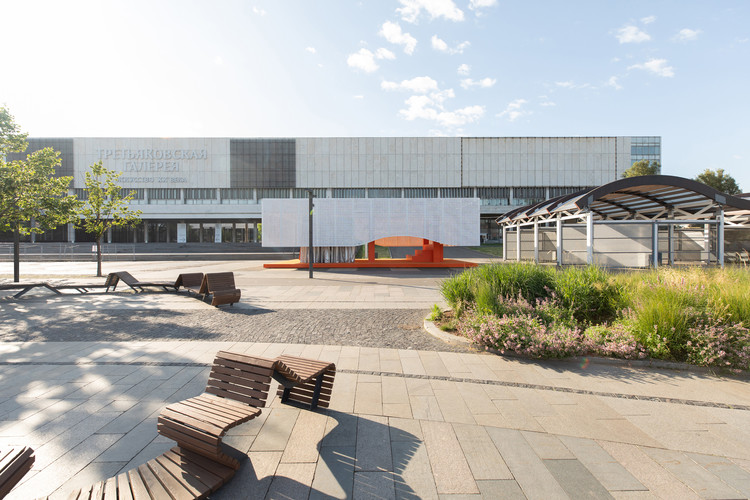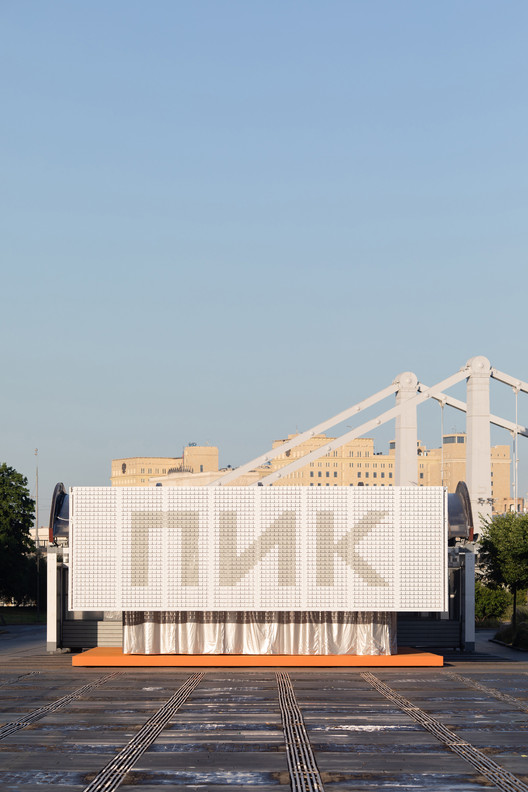PIK Pavilion / Masterskaya Be
PIK Pavilion / Masterskaya Be


Text description provided by the architects. PIK Pavilion by Masterskaya Be is a temporary summer pavilion for public activities. In the winter of 2019 Masterskaya Be won a closed competition for the design of the pavilion for the real estate company. The concept of the summer pavilion develops in three aspects: the pavilion function – sports and educational events, the envelope – protects the main function from external influences and attracts visitors from outside, the curtain – allows to transform the space and create different scenarios inside the pavilion.


The pavilion has an area of 150 sq. m. and a height of 4.5 m. It has a spectacular kinetic facade, which sets in motion even from a light gust of wind. The architecture of the pavilion is based on the design code and company’s identity, the entire interior is covered with orange rubber coating – the corporate color of PIK Group. It was designed as a relocatable construction, which can be easily and quickly mounted and demounted and smoothly fit in at the new location.



The facade is raised from the ground and forms two entrances to the pavilion on long sides. A large double-sided curtain moves along the perimeter of the facade, allowing to create a cinema inside the pavilion in the daylight hours and protecting visitors from rain during sports activities. Especially for the summer pavilion, a special lifestyle program of events has been developed, revealing the components of the quality living environment and its impact on the city residents. The program includes film screenings, master classes, and lectures. With minimal transformation and thanks to the storage of some equipment inside the tribune, the venue adapts to any of these activities.

Structural design. The pavilion is a prefabricated structure. The roof structure is supported by 6 bearing columns. Facade panels are mounted on the bearing structure. The floor base is mounted on screw supports for further adjustment to the site relief. The tent roof consists of 6 funnels connected to the drainage system inside the supporting columns for collecting and draining rainfall under the pavilion base.






